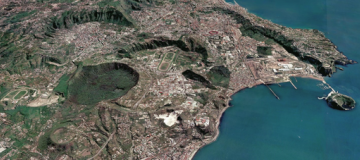
Understanding and forecasting magma pathways and the location of eruptive vents
Speaker: Prof.ssa Elena Rivalta, University of Bologna, Department of Physics and Astronomy - Thursday 13 October – 4,30 PM | Aula Arduino
13.10.2022
Magma is transported through the brittle-elastic lithosphere by diking. Diking is a mechanism similar to hydraulic fracturing where a volume of fluid occupies a crack which propagates by fracturing rock ahead and pinching shut at its back. The fluid-filled crack’s ability to fracture rock comes from the crack shape, which is thicker at its head and thinner at its tail, as dictated by the difference between internal pressure and external stresses. The elastic stress field, by affecting the crack shape, exerts a strong control on dike pathways. If the elastic stresses change due to shifts in tectonic stresses, or to a redistribution of surface loads, or to any other source of stress, then also magma pathways and the eruptive pattern will shift as well. This can be seen at different spatial scales, from the individual volcano to entire tectonic environments. The location of individual vents or even entire volcanic provinces can be `reverse-engineered’ to reconstruct stresses and loading conditions during the relevant epochs. Once stresses have been constrained, they can be leveraged on to forecast future magma pathways.





